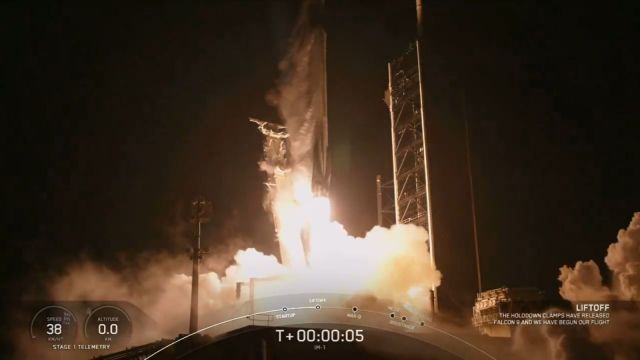SpaceX launches Intuitive Machines’ private ‘Odysseus’ Moon lander
SpaceX launched Intuitive Machines' IM-1 mission, which could be the first private moon lander to make a lunar soft landing if it succeeds.
 The Intutitive Machines IM-1 mission launching on a Falcon 9 rocket. (SpaceX via X.com)
The Intutitive Machines IM-1 mission launching on a Falcon 9 rocket. (SpaceX via X.com)A SpaceX Falcon 9 rocket on Thursday lifted off from the Kennedy Space Center in Florida carrying the private “Odysseus” moon lander built by Houston-based Intuitive Machines. The Nova-C lander deployed from the lander and is now on its way to the Moon.
If Odysseus completes its journey and soft lands on the Moon, it will make it the first privately-led mission to do so. Israel’s Beresheet attempted in 2019, Japan’s Hakuto in 2023 and the American Peregrine in 2024. All of them failed to land on the Moon, with Astrobiotic’s Peregrine suffered a propellant leak hours after launch and eventually burned up in Earth’s atmosphere.
The Intuitive Machines IM-1 mission was set to launch on Wednesday but SpaceX postponed the mission because it found an issue with the temperature of the liquid methane that would be used by the Odysseus lander built on the NOVA-C platform.
“Launch of the IM-1 lander required SpaceX teams to design a new fueling system and procedures to load the lander with liquid methane and oxygen while encapsulated in a Falcon 9 fairing. This is a first for using methane on Falcon 9, so the Falcon team was able to lean on the Starship team’s expertise in this area to prepare for this mission,” said SpaceX in a post on the platform X, formerly Twitter.
The lander and its payloads are expected to function on the Moon for about seven days till the lunar night sets in. This also meant that it had a very short launch window. Once it becomes night near the south pole of the Moon, where the spacecraft is planned to land, Odysseus will not be able to power itself and its scientific payloads.
“Today’s IM-1 mission will provide insights into the lunar surface environment paving the way for Starship’s Human Landing System putting the first NASA Artemis astronauts on the Moon,” added SpaceX. While Starship is expected to support the Artemis 3 mission, the crew of four astronauts will travel to the lunar orbit in a Space Launch System with a Block 1 configuration.







